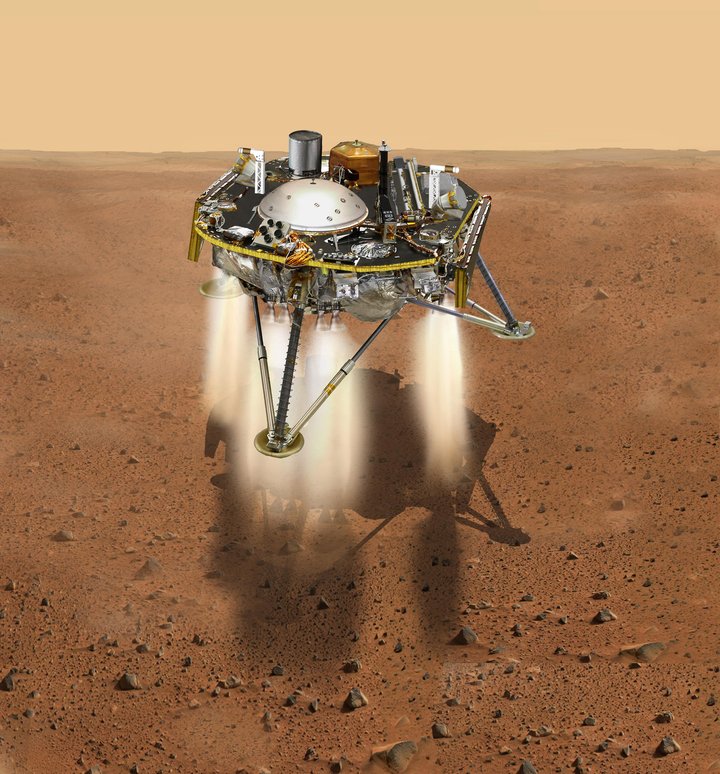It’s not easy to go to Mars.
Of 43 robotic missions to Mars, 18 have succeeded. Not all of these were designed as landers, but of the 14 missions that did make it to the surface, eight were successful. The rest either (1) crash-landed, (2a) landed safely but didn’t function (the UK Beagle 2), or (2b) functioned only briefly (the USSR Mars 3). The successful ones landed safely and functioned for months or years before expiring (Viking 1 and 2, Pathfinder-Sojourner, Spirit). Just two are still in operation (Opportunity, miraculously still plodding along 14 years after landing) and Curiosity (which landed in 2012).
Tomorrow, Monday, another craft is due to land after traveling some 300 million miles since launch last May 5. It’s the Mars InSight Mission, short for “Interior Exploration using Seismic Investigations, Geodesy and Heat Transport,” designed to study the interior of the planet in depth, as it were, for the first time. The two critical pieces of hardware on the mission are a super-sensitive seismometer and a probe that will burrow 16 feet down to measure heat flow below the surface.

InSight lander on Mars, fancifully showing the heat probe designed to measure heat transport from beneath the surface. (NASA/JPL-Caltech)
Between them, these two instruments should give us answers to some fundamental questions about the formation of the inner solar system—the rocky “terrestrial” planets Mercury, Venus, Earth and Mars—four-and-a-half billion years ago. We know these four planets were formed by accretion (gravity-driven accumulation of dust particles into larger and yet-larger objects) and differentiation (interior heating leading to layering: core, mantle and crust). While these processes are understood in general terms, scientists lack details. By using the French-built seismometer to “listen” to Mars’ interior tremors (Marsquakes and the effect of meteorites falling to the surface on the crust and mantle) and by checking the heat flow down to about 16 feet, they hope to round out their picture of not just the formation of Mars, but also of the other inner planets—including, of course, Earth.
Unlike Opportunity and Curiosity, InSight is a stationary lander—no roaming around on the surface. What it lacks in mobility, however, it makes up for in sophistication with its super-sensitive instruments. And this will be the first time we’ve checked anything out more than a few inches below the surface: the German heat probe will be dragged down below by what’s been called a “self-hammering nail” (aka “the mole”), manufactured by a Polish company in an example of international cooperation.

InSight moments away from touchdown on Mars around noon tomorrow. (NASA/JPL-Caltech)
Those are the bare facts, but for me—I hope for you—they’re outweighed by the raw emotion of this latest effort to explore our surroundings in space and time. Mars represents our best bet, by far, to create a place where humans will not just explore, but actually live and thrive. I dream of terraforming Mars, that is, recreating its ancient atmosphere and oceans, warming it up, and—in the far future—converting carbon dioxide into oxygen-rich breathable air, as plants did here two billion years ago. Prior to such flights of fancy, however, we have to be able to get to Mars and land there, safely and reliably. Cheaply would be good, too!
Tomorrow’s nail-biter will, with much technology and a little bit of luck, be a step in the right direction. You can follow the landing here on YouTube from about 11 am on: https://www.youtube.com/NASAJPL/live.
CLICK TO MANAGE